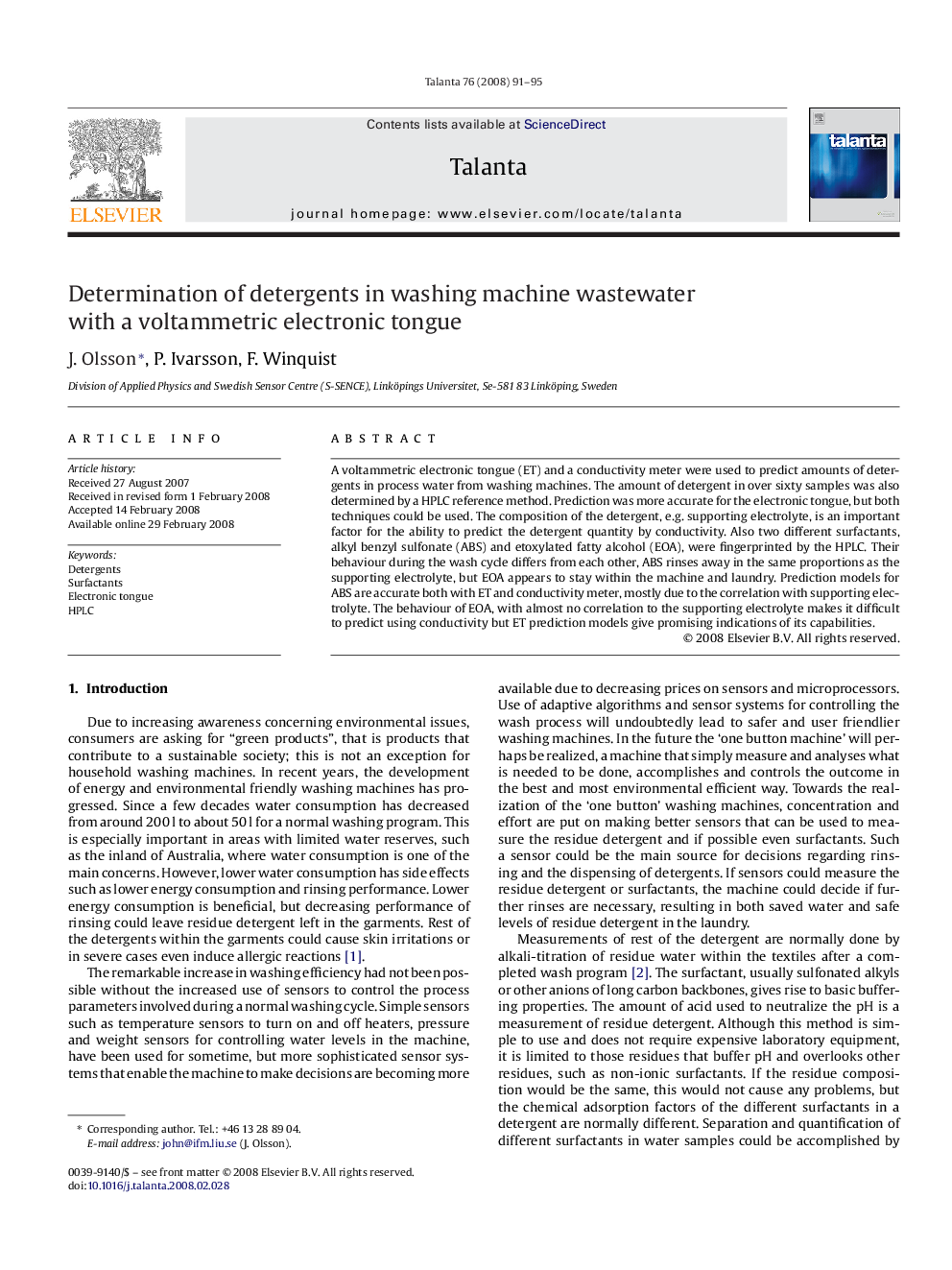| Article ID | Journal | Published Year | Pages | File Type |
|---|---|---|---|---|
| 1243966 | Talanta | 2008 | 5 Pages |
A voltammetric electronic tongue (ET) and a conductivity meter were used to predict amounts of detergents in process water from washing machines. The amount of detergent in over sixty samples was also determined by a HPLC reference method. Prediction was more accurate for the electronic tongue, but both techniques could be used. The composition of the detergent, e.g. supporting electrolyte, is an important factor for the ability to predict the detergent quantity by conductivity. Also two different surfactants, alkyl benzyl sulfonate (ABS) and etoxylated fatty alcohol (EOA), were fingerprinted by the HPLC. Their behaviour during the wash cycle differs from each other, ABS rinses away in the same proportions as the supporting electrolyte, but EOA appears to stay within the machine and laundry. Prediction models for ABS are accurate both with ET and conductivity meter, mostly due to the correlation with supporting electrolyte. The behaviour of EOA, with almost no correlation to the supporting electrolyte makes it difficult to predict using conductivity but ET prediction models give promising indications of its capabilities.
